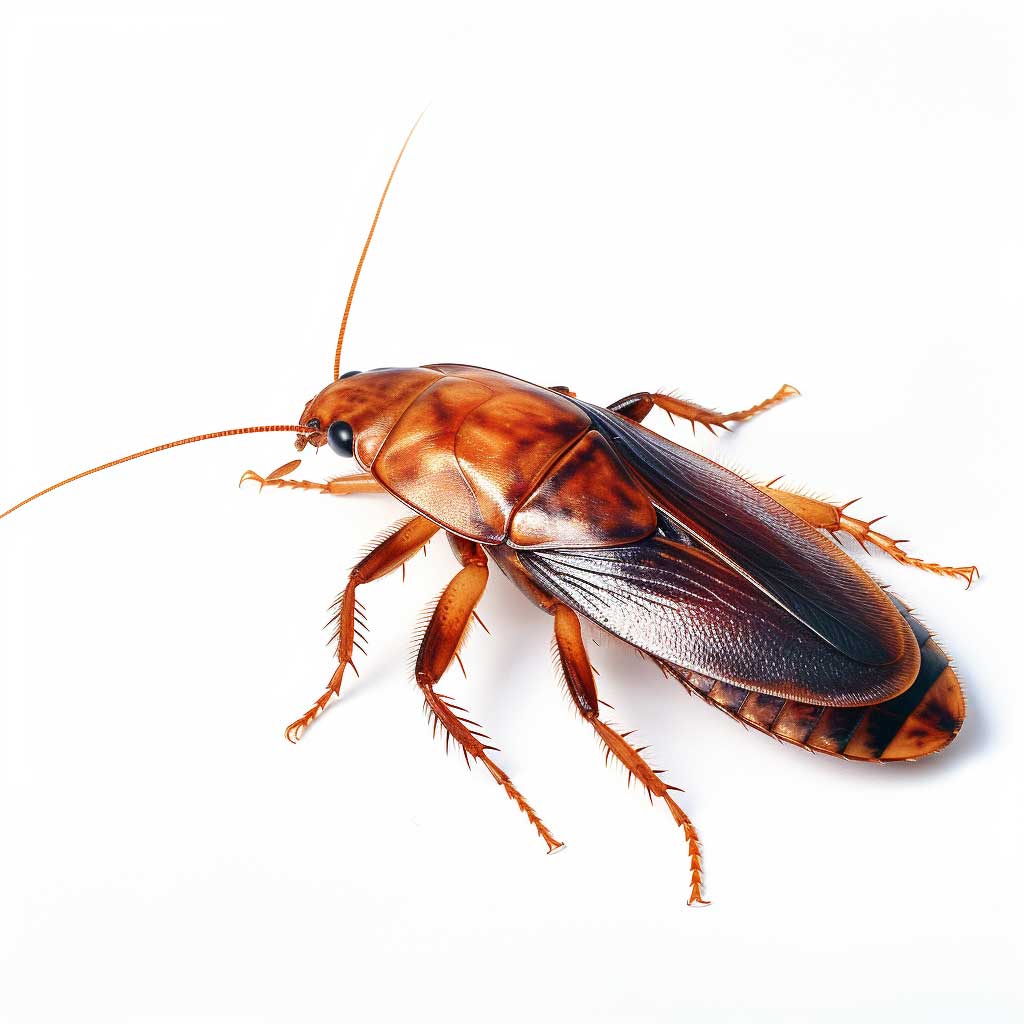03 6268 5397
Cockroaches are attracted to buildings where there is food, moisture, and warmth. Cockroaches are omnivorous and considered opportunistic feeders, which means they will eat almost anything! from cardboard, glue, faeces, dead animals too pet food and dead plants. The majority of cockroach species are nocturnal, hiding during the day and becoming active at night. Different cockroach species dominate different areas. In Tasmania, we commonly see the German cockroach or the American cockroach.
Cockroaches in your home and business is potentially hazardous. Cockroaches can trigger asthma or dermatitis side effects and furthermore carry harmful bacteria like Salmonella & E.coli.
Call on Scorpion to minimise cockroach activity with a range of techniques, while minimising risk to the environment and non-target species.
The German cockroach (Blattella germanica) is the most common and successful cockroach that co-exists with humans. It is the most prolific producer of all nuisance cockroaches, developing from hatching to maturity in as little as 40 days.
Adults have two black longitudinal stripes on the pronotum and are pale amber-brown in colour. The female usually carries egg cases until right before hatching, and they can contain 30-40 eggs. The great majority of infestations are linked to kitchens or other locations where food is handled. If cockroaches are noticed in large numbers throughout the day or in regions of a building where food is not handled, it is likely that the structure is home to a huge population.


The American Cockroach (Periplaneta americana) is one of the largest and most common, Adults are red-brown with a faint yellow border around the pronotum. Ordinarily, the egg casings are bonded or dropped onto surfaces that are somewhat close to food and water. Each egg case may produce up to 16 eggs, and it may take the nymphs 6 to 12 months to mature into adults. The American cockroach enjoys warm, wet, dark environments; in colder climates, it usually lives indoors, while in warmer climates, it spends most of its time outside. Ubiquitous pest found in wall, roof, and subfloor voids, as well as sewers, wet cellars, grease traps, and garbage dumps.
The presence of food, water, and shelter is the main draw for cockroaches to dwellings. Understanding what cockroaches find appealing might help you take precautions to lessen the likelihood of infestations. Here are some typical elements that cockroaches find attractive:
Cockroaches can be attracted by leaving food out in open containers or neglecting to properly seal food. As scavengers, cockroaches will eat even the tiniest food scraps and residues left on surfaces like countertops, floors, and appliances. Cockroaches can find food in unwashed dishes and food scraps left in sinks or on countertops.
Cockroaches are scavengers that feed on food leftovers and residues found in garbage cans and recycling bins.
Garbage that has not been properly disposed of can be a big attractant.
Cockroaches can get into your house through microscopic cracks, gaps, or breaches in your walls, doors, and windows. Some cockroach species are drawn to light and may be lured to outside lights surrounding the residence.
Depending on the kind of cockroach, the level of infestation, and the area of activity, cockroaches are treated utilising targeted control employing a range of techniques. The most efficient form of application will be chosen once the technician has inspected the property. This might involve using sprays, powders, and gels together with non-chemical methods.
Methods of treatment may include:
If you suspect a cockroach infestation, get a professional pest control service to get rid of them.
Regular cleaning, excellent sanitation practises, and eliminating potential access points can all help to keep cockroaches at bay.

Paula Clancy
Please select residential or commercial then complete the required information.
